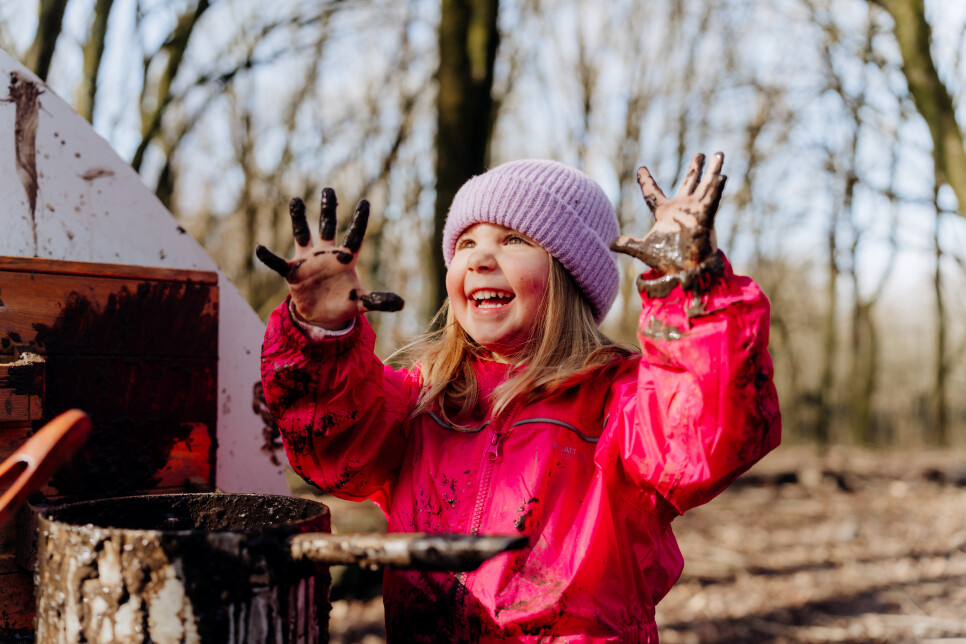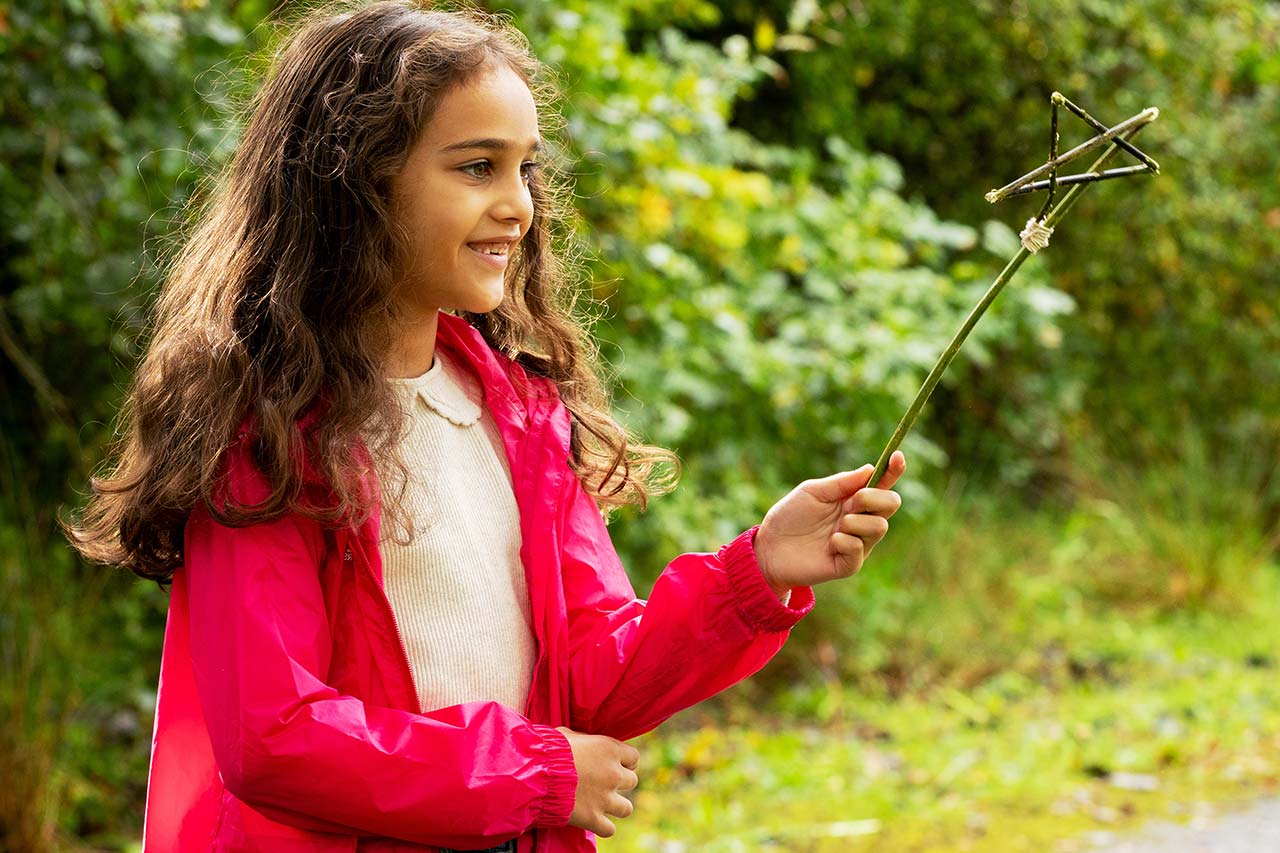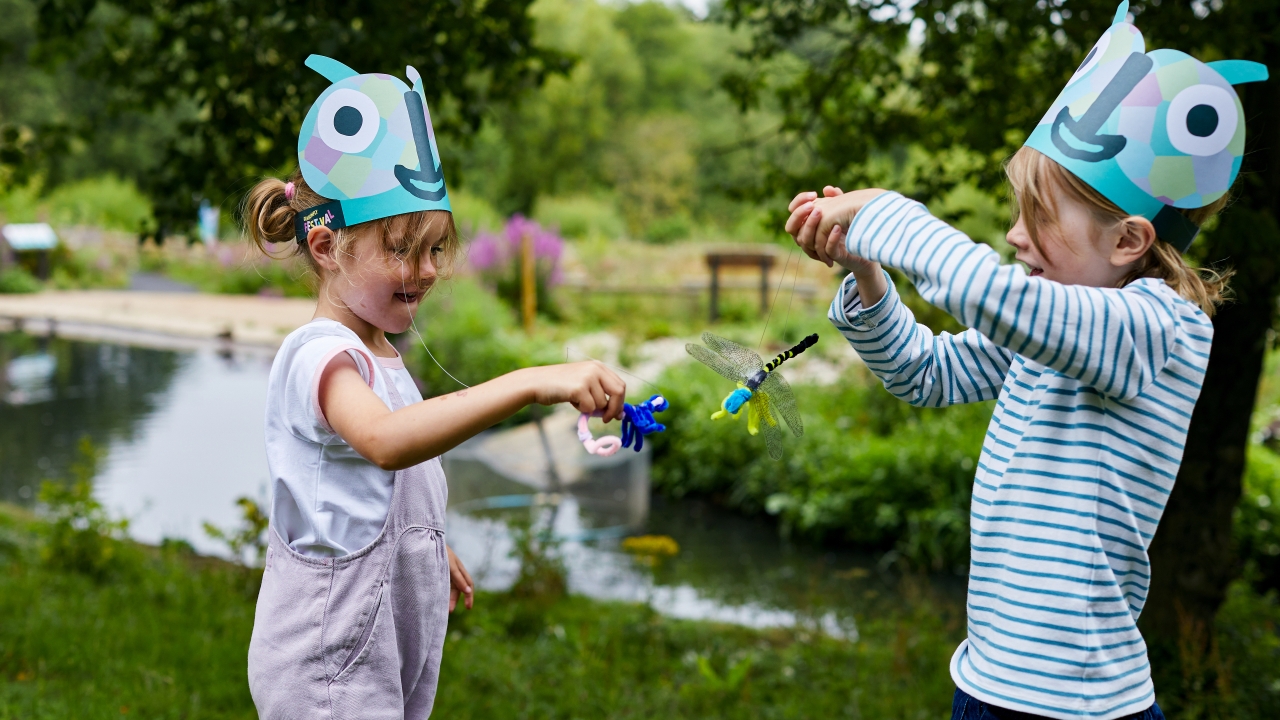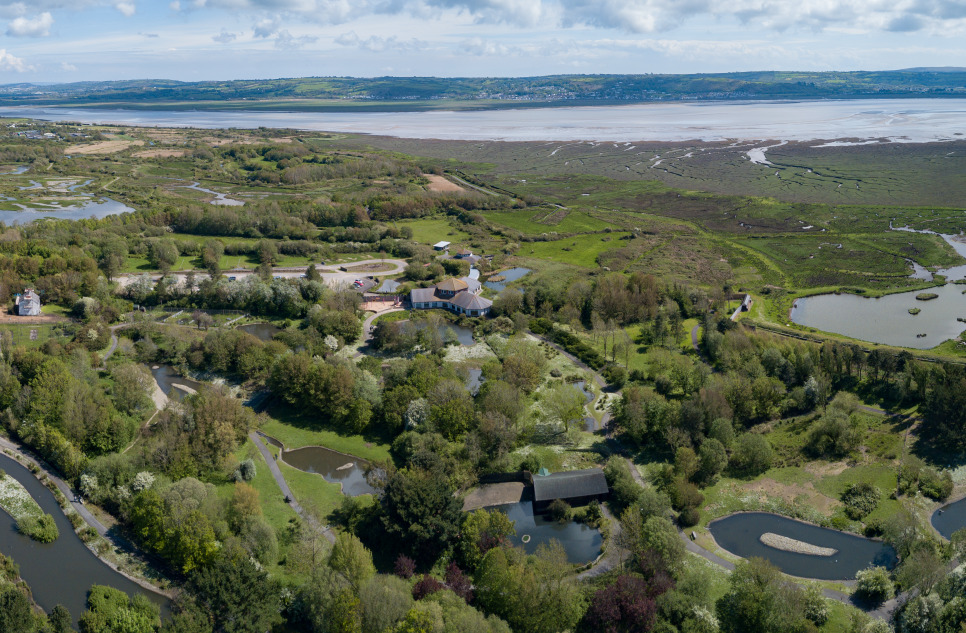Enjoy the Beauty of Spring: Exploring the Signs of Spring in Our Wetlands
Enjoy the Beauty of Spring: Exploring the Signs of Spring in Our Wetlands
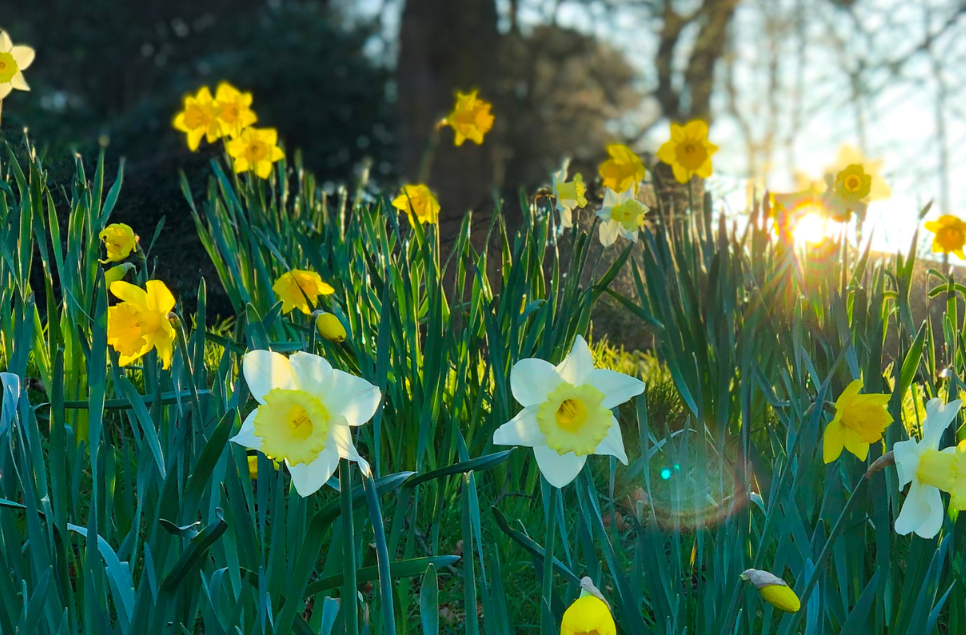
The spectacular springtime transformation of these magnificent wetland ecosystems has begun. Watch as they come alive with new growth and wildlife activity, bursting into vibrant and colourful landscapes before your eyes.
Why not get together with family and friends to enjoy an invigorating outdoor adventure? A different experience awaits you on every visit to Llanelli Wetland Centre!
We know it’s not time to ditch the winter layers just yet, but the early signs of spring are showing in the Llanelli wetlands. Here are some highlights to look out for on your visit.
Buds and Blooms
Seeing a Pussy Willow, Birch, or Hazel branch adorned with fluffy catkins or spotting a welcome dot of colour from an emerging flower bud gives a sense of reassurance and renewal.
The bobbing yellow Daffodils that greet visitors at the entrance gates are exploding into bloom, seemingly one by one, to form a procession of sunshine-bright beacons - just in time to celebrate St David’s Day on 1 March.
Elsewhere, dainty white Snowdrops can be found in the wooded areas, and brazen gold Gorse lines the paths of the nature reserve. Each sweet bloom is a welcome energy source for pollinating insects that have emerged to brave the cold and get a head start on their year’s work.
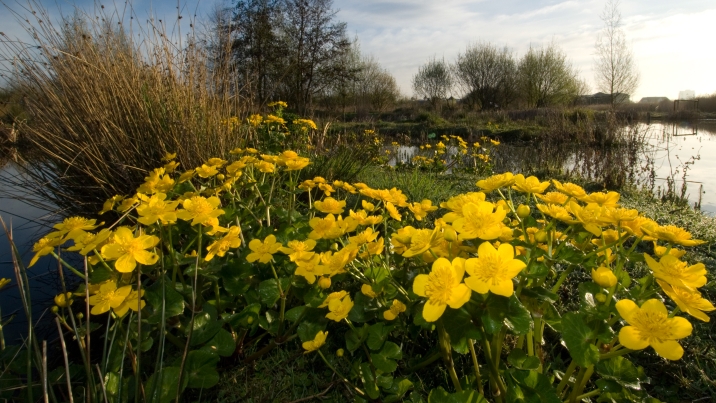
Along the watery edges of our wetland ponds and ditches, look out for the striking buttercup-yellow flowers of Marsh Marigolds. Unlike many plants, its flowers remain open in wet weather and fill with rain, allowing pollen to float from the stamens to the stigma - ensuring pollination even in the rainiest British spring when few insects are about.
The trees are working hard too. Their roots are now busy pulling water and nutrients from the rich wetland soil, while their leaf buds are getting ready to sprout and fan out as soon as there’s enough sunlight to start photosynthesising.
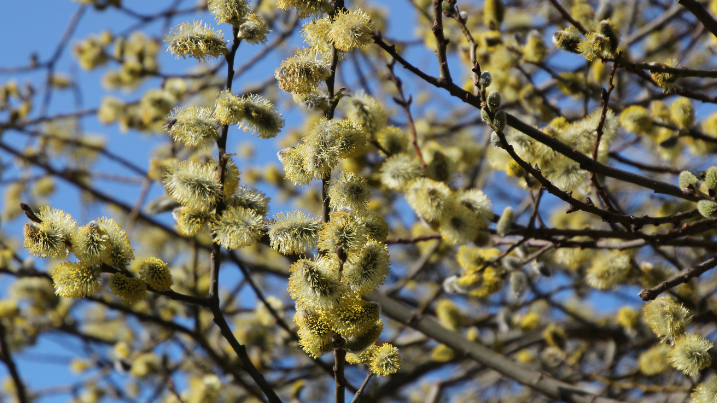
Wind-pollinated trees have to flower before their leaves emerge so their pollen can blow around as freely as possible, unrestricted by their own foliage. Hence all the catkins. Nature is very clever, isn’t it?!
Broody Battles
Early spring on our wild reserve is all about new birdlife and the buzz of activity that comes with it. Squabbles over territories, elaborate courtship displays and mating calls, frenetic nest-building…this season has it all!
The characterful Moorhen is a familiar sight, strutting around on big yellow feet, clucking and flicking their white-feathered butts all across the wetlands. Look out for mighty battles over territory and nesting material at this time of year. Find out more about these misunderstood wetland icons here.
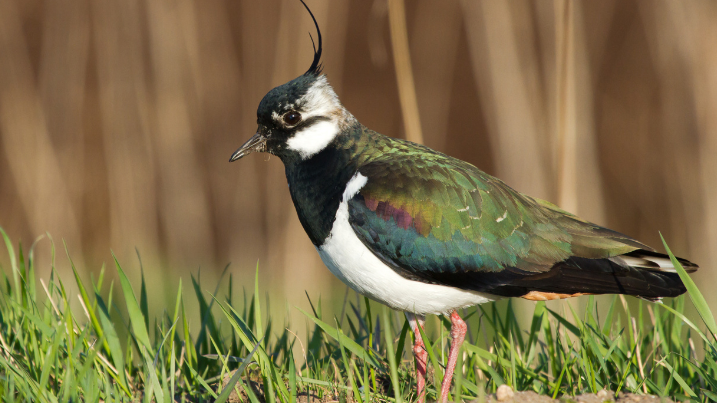
Along the reserve paths by the Freshwater Lagoon, listen out for the beautiful drawn-out ‘peewit’ calls of the red-listed Lapwing. Overhead, watch for impressive aerial displays as the males desperately attempt to woo their female of choice with dramatic tumbles and swoops.
If successful, they’ll pair off and build nests on the islands specially prepared for them by our reserve team of staff, volunteers and grazing heritage livestock.
Did you know that a group of lapwings is called a ‘deceit’? The name comes from how the parent birds lure potential predators away from their nests and helpless chicks by feigning a broken wing.
Many vulnerable species depend on our wetlands for a successful breeding season, and every spring brings new challenges. The team is constantly monitoring nest sites and making improvements to help target species wherever possible.
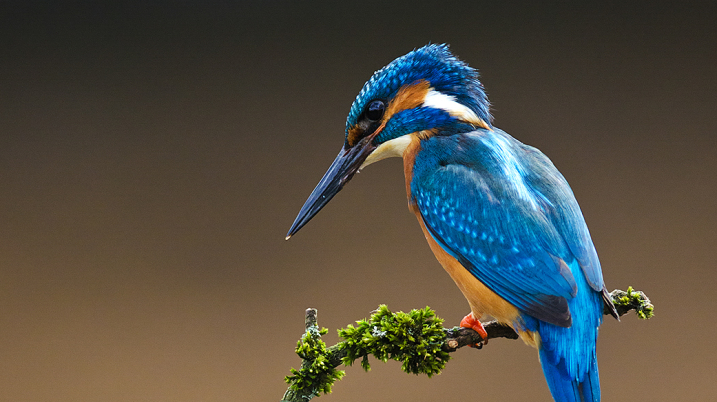
This winter, we installed an artificial, wood-clad nesting bank for Kingfishers to help them avoid predation and water erosion. Promisingly, adult birds have already been scouting the bank, and we’re hoping pairs will use the bank this spring. We’ll be sure to update you!
Wet Woodlands and Willow Tits
There are around 15 hectares of precious wet woodlands at WWT Llanelli. Most of the trees that make up this habitat were planted between 1998 and 2000 when the Millennium Wetlands nature reserve was restored from agricultural land. Therefore, a high proportion of the trees are the same age and size, and this means that the woodland areas are not as structurally diverse as they might be.
We commissioned a woodland survey and report last year to find out how to better manage the woods for a range of wildlife, particularly Britain’s fastest declining bird species, the red-listed Willow Tit.
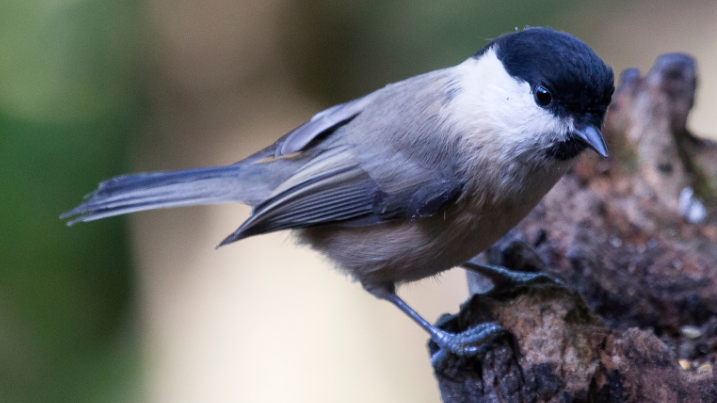
The report recommended a range of tactics, including speeding up the ageing of some trees, increasing standing deadwood and understory vegetation, restoring clearings, and creating more structural diversity in the wet woodland. We have also moved nest boxes to reduce competition from Great Tits and Blue Tits, and we will be installing some purpose-made Willow Tit nest boxes, created by William Costa in the WWT conservation breeding team.
We have started our annual Willow Tit survey, and we are pleased to report that a pair of Willow Tits are on the reserve. Fingers crossed we can help to build the population over the next few years!
Our wetland nature reserve, AKA the Millennium Wetlands
Many people know about our collection of friendly birds from around the world. The ducks, geese and swans that we care for offer a great way for all ages to learn more about endangered species, conservation, and global wetland habitats.
But Llanelli's wild wetlands are a hidden gem many still don't know about. Spanning over 450 acres, the wetlands at WWT Llanelli are a sight to behold and offer a unique opportunity to explore a diverse landscape and view wildlife up close, all year round.
Whether you're a nature enthusiast or simply looking for a peaceful place to unwind, Llanelli's wetlands are a must-visit destination this spring.
Read more about our 'two halves' here.
Ready to visit?
If you’ve been inspired to visit Llanelli Wetland Centre this spring, find out more and plan your visit online.
